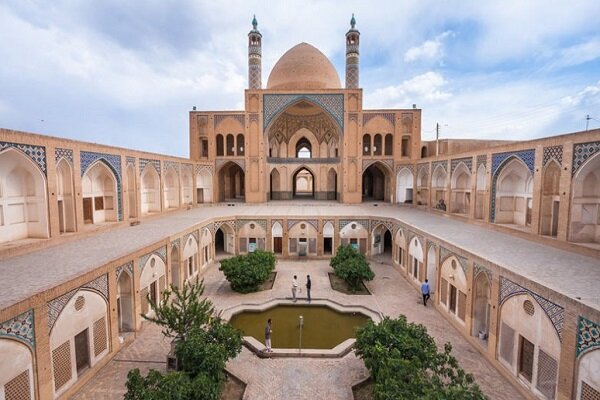Kashan is known for manufacturing carpets, silk, and other textiles. Today, Kashan houses most of Iran's mechanized carpet-weaving factories and has an active marble and copper mining industry. Kashan and its suburbs have a population of 400,000.
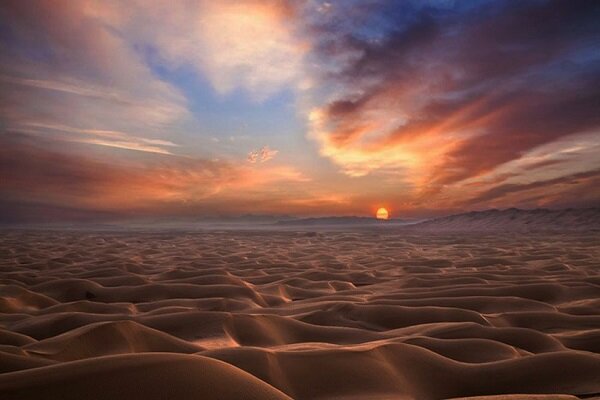 Maranjab Desert
Maranjab DesertGeography of Kashan
The city of Kashan is divided into two parts, mountainous and desert. On the west side, Kashan is cited in the neighborhood of two of the highest peaks of the Karkas chain, Mount Gargash to the southwest of Kashan (the home of Iran national observatory, the largest astronomical telescope of Iran) and Mount Ardehaal in the west of Kashan, also known as "Damavand of Kashan" and the highest peak of Ardehaal mountains (end part of Karkas chain in central Iran).
On the east side of the city, Kashan opens up to the central desert of Iran. Kashan is also known for the Maranjab Desert and Caravanserai located near the Namak lake (or salt lake). Today Maranjab and the surrounding Shifting Sands is a visitor destination at the weekends for safaris.
Climate
The climate of Kashan, like other central cities of the country, is hot and dry and the nights are cold.

Kashan Rose Water Festival
Iran Rose Water Festival is a seasonal and popular festival in a well-visited tourist destination in Iran. Kashan Rose Water Festival is held each May, hosted by Qamsar and Niasar in Kashan city. Qamsar rose water is truly reputed in the world and in terms of quality, it is absolutely unrivaled.
The festival is held every year in the spring, usually from mid-May to the end of June. As mentioned above, the main cities where tourists can visit Kashan Rose Water Festival are Qamsar and Niasar. Being highly prominent in rose water making, Qamsar is located 30 kilometers from Kashan.
Known as the ancient garden of Iran, Niasar is also located 30 kilometers from Kashan from the west. Apart from its popularity in the festival of rose and rose water, Niasar is famous for its historical and natural attractions as well.
In each May, Niasar and Qamsar in Kashan are filled with the aromatic odor of Damask roses, where you can find different methods of rose water making as well.
Souvenirs and Handicrafts
Kashan Baklava:�Baklava�is one of the sweets that is cooked in many Iranian cities, but Kashan baklava has another flavor. The unique feature of these Kashan souvenirs is the nuts that they use in their materials. Kashan Baklava consists of five nuts; walnut, almonds, hazelnuts, pistachios, and Indian almonds and has a very high nutritional value.
Haji Badami�sweet:�It�is one of the most delicious Kashan souvenirs that is famous for its high amount of almonds, and also has high nutritional value due to nutmeg and flour used in it. It is a special cookie for Yazd, Shiraz, and Kashan.
Carpets and rugs:�In many cities of Iran, weaving carpets is common, but each city has a unique design. Kashan carpet pattern is also very beautiful and they are also used to make machine woven carpets.
Pottery:�Another thing from�Kashan�souvenirs�is pottery art that belongs to seven thousand years ago. Evidence shows that the oldest pottery shop was related to the Silk civilization in Kashan.
Tourist Attractions and Historical Sights
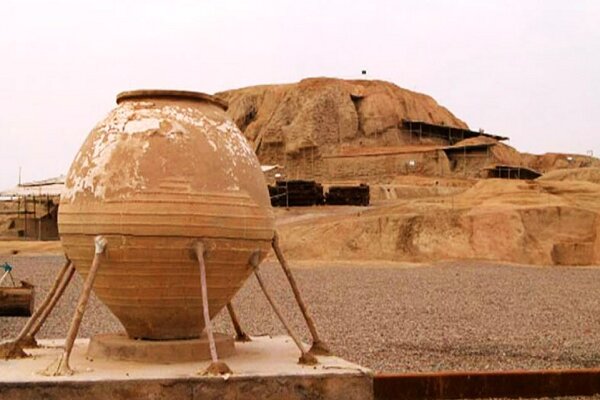
Tape Silak or Silak Hill:
In 5000 BC, the cavemen of the Iranian plateau began to turn to the plains for new life because of climate change and the formation of fields and grasslands. The historical background of the Kashan district is related to the oldest human settlements on the central plateau of Iran called Sialk and Kashan was one of the first foundations of human civilization. According to archaeological excavations in the Sialk Hill of Kashan, the history of human presence in that area can be traced back to 7,000 years ago.� In fact, the people of the Sialk Hills, over 5000 years ago, were overthrown by the Aryan whose memorials have been found over different periods of time, which includes long tubs with horse and sun images, iron armor, and swords and spears.
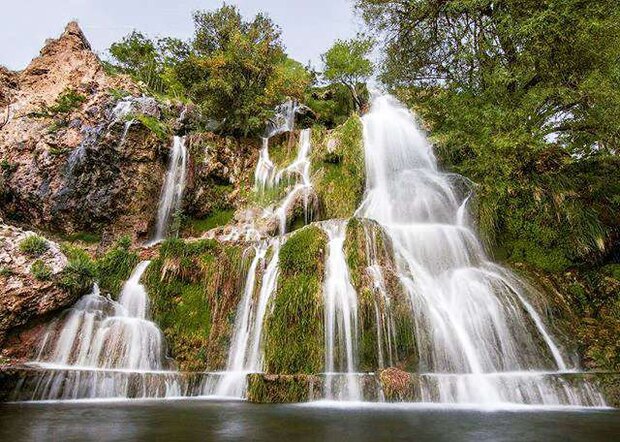
Niasar Waterfall:
Niasar Waterfall starts from a water spring near a fire temple dating back to the Sassanid era. Niasar owns all its history and natural view of this ancient spring. The spring also waters the vast lush lands of Niasar. The bedrock that made the water passage of Niasar Waterfall is usually made of lime and through ages made a delightful shape. Niasar waterfall is as high as 25 meters; the enjoyable atmosphere of the surrounding area of Niasar Waterfall is a proper choice for spending some quality time to enjoy the natural scenic view.
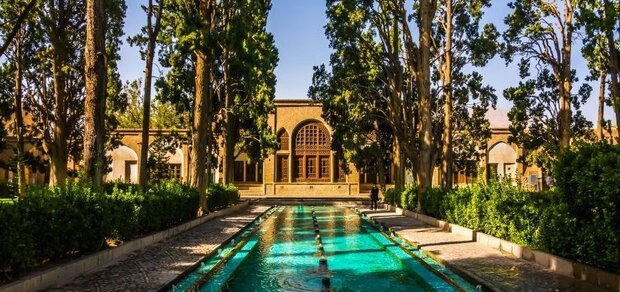
Fin Garden:
The Fin Garden is located 6 km far from the city in the south of Kashan. It�dates back to the Safavid period. It is one of the most valuable historical places in Kashan. Some historical sources refer to the date of the garden to the Al-buye reign. The buildings inside the garden include the entrance door and tower, Oshtor-Galu, the alcove in the south of the garden, the museum in the west, the small and large bathrooms, and the library in the eastern garden. The Fin bathroom in the Garden is the historic place where Naser al-Din Shah killed his Chancellor Amir Kabir. In the southern part of the Fin Garden, there are two baths known as the small and large baths.
The small bath is from the Safavid era and the large bath is from the Qajar era which was built by Fath-Ali-Shah. The large bathroom was for the courtier and the small bathroom was for ordinary people. In the southern part of the Fin, there is a spring, which is known as Cheshmeh-Suleimaniyeh. Most garden trees are between 100 and 470 years old.

The Mosque & School of Agha Bozorg:
It is one of the most beautiful and magnificent mosques that was built during the Qajar era. The dome of the building, with its beautiful architecture and its design, is very unique and beautiful to look at.
The mosque was built in the late 18th century by master-mi'mar Ustad Haj Sa'ban-ali. The mosque and theological school are located in the center of the city of Kashan.
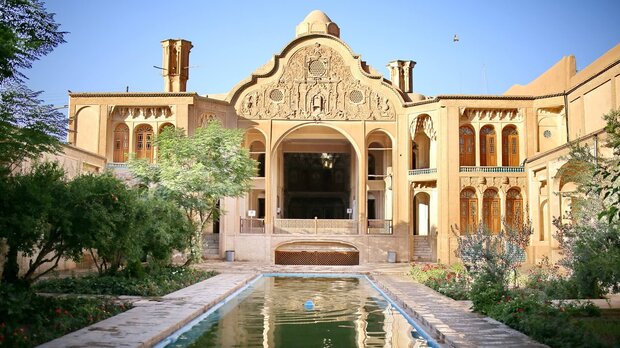
Boroujerdi House:
The Boroujerdi House is another valuable historical monument that was built during the Qajar period. The most important part of this house is its summer mansion which is located in front of the entrance door.
It is consist of a king hall, a room, and 5 doors with magnificent stuccos. The dome of the summer house is painted with flowers, birds, and animals on it. Also, you can see pictures of Qajar Kings on the wall. One of the features of this old house is its fantastic wind tower. The Broujerdi House, has no garden, in its both internal and external sections. The building was built on three floors and on four sides, surrounded by inner and outer courtyards. The Boroujerdi House was one of the main mansions for the accommodation of the king and the courtiers.
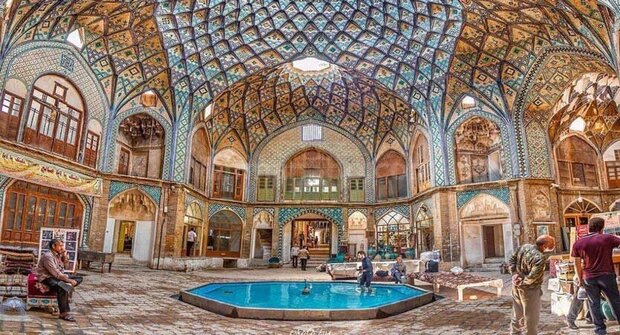
The Historical Bazaar of Kashan:
Bazaar of Kashan is an old bazaar in the center of the city of Kashan, Iran. It is thought to have been built in the Seljuk era with renovations during the Safavid period. The bazaar has famous architecture, especially at its Timche-ye Amin od-Dowleh section, where a grand light well was built in the 19th century.
Traders who visited the Bazaar usually stayed in these caravansaries because they were close to the main gate of the city and played a significant role in the city's economic activities.
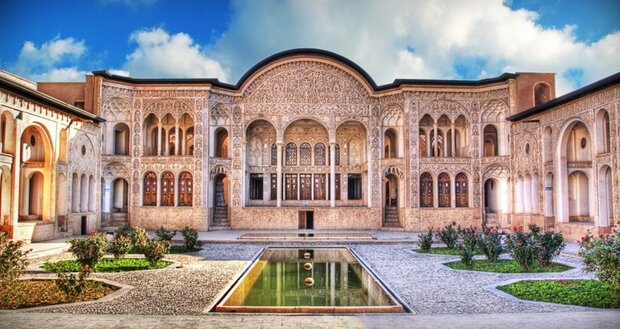
Tabatabaei House:
The house of Tabatabaie is known as the bride of Iranian houses because of its special beauty. This house is near the Borujerdi house. The house consists of four courtyards, the central courtyard belongs to the exterior and two courtyards belong to the interior and a courtyard for the crew. Another important advantage of building the house in addition to cooling and temperature adjustment is its easy access to Qanat and the resistance against the earthquake.
The interior section of the house consists of a simple five-door room in the center and two courtyards on both sides of the house, with basements where the wind catchers flow the air inside. This was also the residence of the Tabatabai family. The courtyards on the northwest side of the house are larger and have more rooms. Underneath the interior section, there is a large basement that has its own unique characteristics such as wind catchers, a perforated roof, two-sided walls, and the existence of a pond.
By MEHR�
